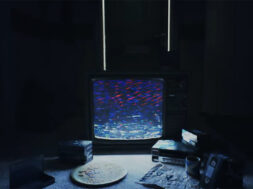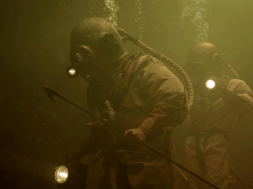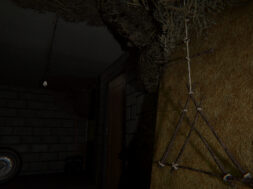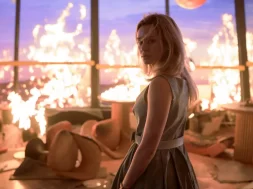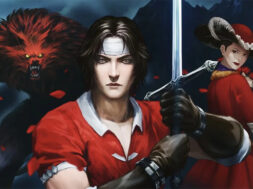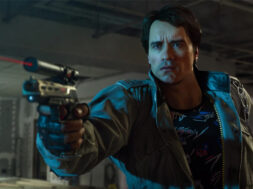Video games, like movies, tend to fall back on its major successes, cranking out sequel after sequel. Sometimes the truly mega popular games even get film adaptations, which is why games franchises like Resident Evil and Silent Hill have become household names. Even smaller scale releases on current gen consoles have found an audience thanks to word of mouth, spawning sequels, prequels, and spinoffs of their own; titles like Until Dawn and Outlast. But what about quiet releases from before the advent of social media, or even the Internet as we know it today? Games that were innovative, sometimes chilling, and always fun, but slipped under the radar to be forever stuck on older platforms for various reasons. These five games were great and deserve to be resurrected from the land of forgotten video games:
Eternal Darkness: Sanity’s Requiem
Originally planned for Nintendo 64 release, it became a launch title for the Nintendo GameCube in 2002. A psychological horror action game with gameplay mechanics like Resident Evil, Eternal Darkness spans four different locations over thousands of years. Interconnected stories that interlace together the occult, religion, and myths across time and space that feels very Edgar Allan Poe. Most intriguingly, though, is the game’s employment of a sanity meter, a bar which decreases when the player encounters evil. As the bar gets low, the player’s game is affected by the character’s losing grip on reality. Things like weird camera angles, bleeding walls, unsettling noises, and even room disorientation. What really made Eternal Darkness unnerving is when the sanity effects caused the game to break the fourth wall, attempting to play tricks on your mind by creating simulated errors on screen and in sound that are meant to fool the player into thinking their TV is malfunctioning outside of the context of the game.
The Thing
This 2002 third-person survival horror game that was set as a sequel to John Carpenter’s The Thing was a commercial success. Released on PC, Xbox, and Playstation 2, the story followed Captain Blake, a member of the Special Forces team sent to the ill-fated Antarctic outpost to find out what happened to the research team. Endorsed by Carpenter, who even cameoed as a voice/character, the game had a unique fear/trust system that determined how characters reacted to Blake. If they didn’t trust him at all, they would attack. Complete faith meant they would follow orders, even attacking others on Blake’s behalf. It was a clever system that played heavily on the paranoia that made the movie such a classic. And that ending was a huge moment for fans of the film. So, with great reviews and a massive success, why did this game eventually fade into obscurity? The developer behind the game, Computer Artworks, was forced to shut down and entered into receivership shortly after pre-production on a sequel to The Thing.
Zombies Ate My Neighbors
Released on 1993 on Super NES and Sega Genesis, this 50-level action-shooter paid homage to everything from classic Universal Monsters, The Texas Chain Saw Massacre, Tremors, and so much more. That it had a catchy earworm score meant once you started playing, it was hard to get this game out of your head. It’s a simple set up, slaying monsters, aliens, and zombies over various levels of pyramids, castles, malls, neighborhoods, and more as you save unwitting neighbors from being devoured. Even the marketing slayed; the simple yet clever zombie POV commercials ensured this was a must purchase game for me growing up. While beloved, Zombies Ate My Neighbors wasn’t as big of a hit as it should have been. A sequel was released the following year, Ghoul Patrol, but it was more of a re-worked title to capitalize on Zombies Ate My Neighbors. It’s long past time we get a modern sequel.
Condemned: Criminal Origins
While most horror games play off fears of grotesque creatures or the supernatural, this 2005 Xbox release is a grisly reality based first-person survival horror game, following a crime scene investigator on the trail of a serial killer. The player navigates through condemned buildings in a fictional town of Metro, searching for Serial Killer X, the one who framed him for murder. While gathering clues and pieces to the story, you encounter endless psychotics and violent denizens of Metro, and it’s far scarier than it sounds. Cracked out maniacs charging at you is jolting as it is, but the game introduces a whole variety of crazies you never thought possible, like super creepy Mannequins. The lifelike brutality did pave the way for a direct sequel in 2008, Condemned 2: Bloodshot, and a potential film adaptation, but life beyond that for the series has since flatlined.
Phantasmagoria
A point-and-click FMV horror game released for Windows and MS-DOS in 1995, Phantasmagoria followed a married couple who buy a mansion in the middle of nowhere, and soon discover it was once owned by an old magician. As the wife, Adrienne explores the old house, she begins to get flashbacks of the magician and his wives. The further the game gets, the more graphic, violent, and gory those deaths get to the point where it feels almost like watching a snuff film unfold. That it features real actors, well, it feels like something taboo. The rape scene proved to be a controversial point of contention. A horror game aimed toward adults, Phantasmagoria was a massive success at the time of release. Written and designed by Roberta Williams over a very long, labor intensive process, there’s not really been anything else quite like it since. Not even the sequel, written and designed by Lorelei Shannon, which was so tonally different and disconnected from its predecessor. Technology has come a long way since, but with content so dark I’d be curious if developers could get away with creating something like Phantasmagoria today. I’d like to see them try.

